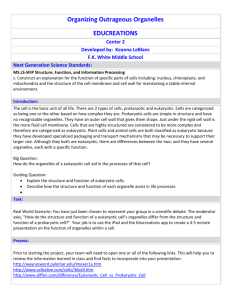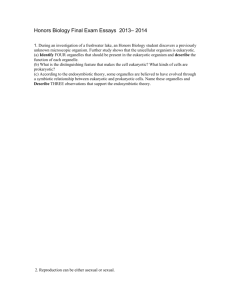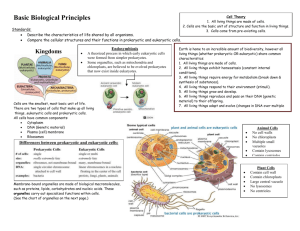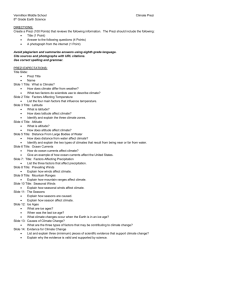HS Science Sample Lesson
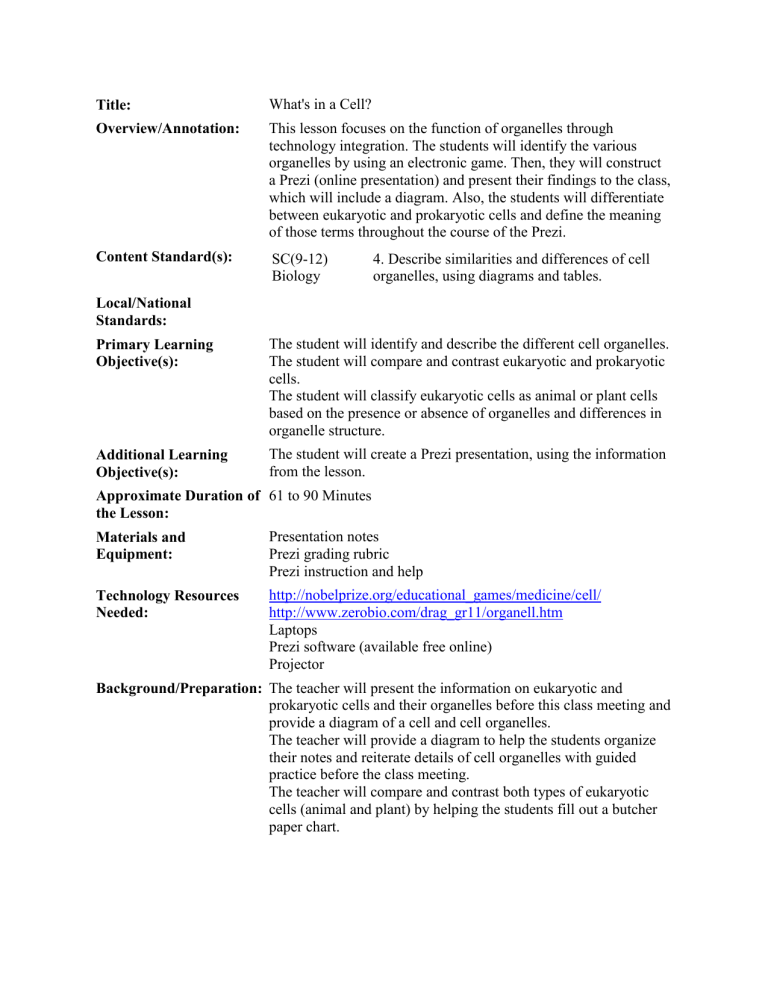
Title: What's in a Cell?
Overview/Annotation: This lesson focuses on the function of organelles through technology integration. The students will identify the various organelles by using an electronic game. Then, they will construct a Prezi (online presentation) and present their findings to the class, which will include a diagram. Also, the students will differentiate between eukaryotic and prokaryotic cells and define the meaning of those terms throughout the course of the Prezi.
Content Standard(s): SC(9-12)
Biology
4. Describe similarities and differences of cell organelles, using diagrams and tables.
Local/National
Standards:
Primary Learning
Objective(s):
Additional Learning
Objective(s):
The student will identify and describe the different cell organelles.
The student will compare and contrast eukaryotic and prokaryotic cells.
The student will classify eukaryotic cells as animal or plant cells based on the presence or absence of organelles and differences in organelle structure.
The student will create a Prezi presentation, using the information from the lesson.
Approximate Duration of the Lesson:
61 to 90 Minutes
Materials and
Equipment:
Technology Resources
Needed:
Presentation notes
Prezi grading rubric
Prezi instruction and help http://nobelprize.org/educational_games/medicine/cell/ http://www.zerobio.com/drag_gr11/organell.htm
Laptops
Prezi software (available free online)
Projector
Background/Preparation: The teacher will present the information on eukaryotic and prokaryotic cells and their organelles before this class meeting and provide a diagram of a cell and cell organelles.
The teacher will provide a diagram to help the students organize their notes and reiterate details of cell organelles with guided practice before the class meeting.
The teacher will compare and contrast both types of eukaryotic cells (animal and plant) by helping the students fill out a butcher paper chart.
Procedures/Activities: Bell Ringer:
The teacher will post bell ringer on the board to activate students' prior knowledge of cell and cell organelles.
Step 1: Review with Game
The student will help the teacher complete an electronic game, which outlines the functions of organelles.
The teacher will answer questions and guide students through the game, while highlighting the differences between organelles and the differences between eukaryotic and prokaryotic cells.
Step 3: Assigning Groups
The teacher will show the students how to navigate the Prezi website.
The teacher will demonstrate how to create a Prezi presentation and answer questions about the technology.
The teacher will show the students a completed Prezi presentation.
The teacher will assign students to heterogeneous groups, according to their ability with technology.
The teacher will distribute laptops and navigate the students to the
Prezi website.
The teacher will distribute paper copies of how to use a Prezi.
The teacher will explain the grading rubric and distribute the rubric to the class, while answering questions about the grading criteria.
The student will work in groups to develop a Prezi that demonstrates their knowledge of eukaryotic and prokaryotic cells, while explaining how different cell organelles work.
How to use a Prezi
Attachments: **Some files GradingRubric_CellOrganelleprezi.xls
will display in a new window. Others will prompt you to download.
Assessment Strategies: The students will be graded on content knowledge, technology use, oral presentation, and collaboration. The teacher will carefully review the Prezis after the presentation to ensure that content knowledge is correct. The student will also be graded on technology use because this is an objective of the activity and will help the students excel academically and professionally. The student will be aware of the grading criteria before the activity begins.
Extension: The students who have already mastered the primary learning objectives will be asked to add a video component to their presentations, which describes the functions of organelles. This video may be self-produced or taken from a website.
Remediation: The teacher will allow these students extra time to complete the presentation.
Each area below is a direct link to general teaching strategies/classroom accommodations for students with identified learning and/or behavior problems such as: reading or math performance below grade level; test or classroom assignments/quizzes at a failing level; failure to complete assignments independently; difficulty with short-term memory, abstract concepts, staying on task, or following directions; poor peer interaction or temper tantrums, and other learning or behavior problems.
Presentation of Material
Time Demands
Environment
Materials
Attention
Assisting the Reluctant
Starter
Using Groups and Peers
Dealing with Inappropriate Behavior
Be sure to check the student's IEP for specific accommodations.
Variations Submitted by
ALEX Users:



